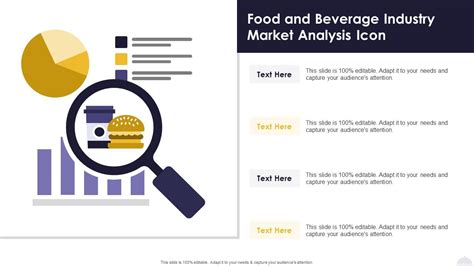A Complete Recipe for a Successful Food and Beverage Industry Analysis
The food and beverage (F&B) industry is a dynamic and ever-evolving sector, presenting both immense opportunities and significant challenges. Conducting a thorough industry analysis is crucial for businesses seeking to thrive in this competitive landscape. This article provides a comprehensive recipe, outlining the key ingredients and steps for a successful analysis.
1. Defining Your Scope: The Foundation of Your Recipe
Before you begin, clearly define the scope of your analysis. What specific segment of the F&B industry are you interested in? Are you focusing on a particular geographic region? Pinpointing your target area ensures your analysis remains focused and relevant. Consider factors like:
- Product Category: Are you analyzing the alcoholic beverage market, the ready-to-eat meal sector, or perhaps the organic food segment?
- Geographic Location: Will your analysis cover a specific country, region, or even a single city? Consumer preferences and market dynamics vary significantly across geographic locations.
- Target Consumer: Understanding your target demographic (age, income, lifestyle, etc.) is crucial for tailoring your analysis and understanding their needs and preferences.
2. Gathering the Ingredients: Data Collection
This stage involves gathering essential data. The quality of your analysis hinges on the reliability and comprehensiveness of your data sources. Consider these sources:
- Market Research Reports: These reports offer valuable insights into market size, growth trends, and consumer behavior.
- Industry Publications: Trade magazines and journals provide up-to-date information on industry developments and trends.
- Government Data: Statistical agencies often publish data on production, consumption, and import/export of food and beverage products.
- Company Financials: Analyzing the financial performance of key players in the industry provides insights into their profitability and market share.
- Consumer Surveys: Understanding consumer preferences and purchasing habits is vital through surveys and focus groups.
3. Analyzing the Ingredients: Key Metrics and Trends
Once you've gathered your data, it's time to analyze it. Focus on key metrics and trends relevant to your chosen segment:
- Market Size and Growth: Determine the current market size and project future growth based on historical data and industry forecasts.
- Market Share: Analyze the market share of key players and identify potential opportunities for new entrants.
- Consumer Trends: Identify emerging consumer trends, such as increasing demand for healthy and sustainable options, or the growing popularity of plant-based products.
- Technological Advancements: Assess the impact of technological innovations, such as automation in food processing or the use of big data in marketing.
- Regulatory Landscape: Understand the regulatory environment and how it may impact the industry. This includes food safety regulations, labeling requirements, and environmental regulations.
4. The Recipe's Secret Sauce: Competitive Analysis
A robust F&B industry analysis must include a thorough competitive analysis. Identify your main competitors, analyze their strengths and weaknesses, and evaluate their market strategies. Consider factors such as:
- Market Positioning: How do your competitors position themselves in the market? What are their key selling points?
- Pricing Strategies: Analyze their pricing strategies and how they compare to yours.
- Distribution Channels: How do your competitors distribute their products? What are their distribution networks?
- Marketing Strategies: Evaluate their marketing and advertising campaigns. What are their branding strategies?
5. Serving Up Your Findings: Report Writing
The final step is to present your findings in a clear, concise, and well-structured report. Your report should include:
- Executive Summary: A brief overview of your key findings.
- Market Overview: A description of the overall market, including its size, growth rate, and key trends.
- Competitive Analysis: An analysis of your main competitors.
- SWOT Analysis: A summary of the industry's strengths, weaknesses, opportunities, and threats.
- Conclusions and Recommendations: Your key insights and recommendations for businesses operating in this sector.
By following this "recipe," you can create a comprehensive and insightful F&B industry analysis that will inform your business decisions and guide your strategic planning. Remember to continuously monitor the market for changes and update your analysis regularly to maintain its relevance.
